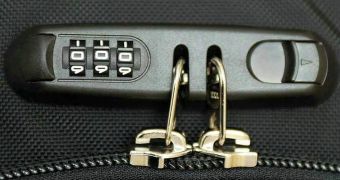Intel plans to give notebook thieves a hard time with the implementation of an innovative anti-theft system that would render the notebook completely useless when in wrong hands. The new system promises to lock down the storage device and the processor of the stolen computer and leave the thief with nothing but a pile of metal and plastic.
Intel's Anti-Theft Technology (ATT) is still in its early baking stage but the company is seriously evaluating the best methods to keep the notebooks in the right hands, or at least to render them useless if they "accidentally" part ways with their rightful owners.
Data security is a critical aspect when it comes to mobile computing. Until now, data protection methods got adopted and implemented by corporations and enterprises only. However, as mobile computing is getting mainstream, consumers are increasingly aware of the risks exposed data can present.
The details about the new technology are scarce and there is no live demonstration of the Anti-Theft Technology. However, according to Intel's Mobility Group chief, Dadi Perlmutter, the new anti-theft system will try to physically disable the hardware components of the laptops that are booted without the proper credentials.
Physically "killing" the computer's hardware is the best solution to prevent unauthorized users from poking inside the stored data. At the moment, there is a large number of hard-disk drives that come with ob-board hardware encryption technologies, but the chip manufacturer is trying to convince storage vendors to port the technology to solid-state drives also.
However,locking down data is not an anti-theft solution, as any tech-savvy infringer would be smart enough to replace the drive with a clean-slated version, then make use of the notebook as if it were new.
Intel is looking for a method to disable the entire hardware, in order to discourage theft. Moreover, the company is trying to integrate tracking technology into ATT, but this would require the services of another provider.
According to the company, the first working samples will be available in the fourth quarter of the year, and perhaps it will come as an extra feature of the Centrino 2 platform.

 14 DAY TRIAL //
14 DAY TRIAL //